Porter and Dolly
(With Supplementary Information About Country Music and Electronic Media, Sponsorship of Television Programs, 19th and Early 20th Century Medicine, and Fancy Costumes with Funny Names)
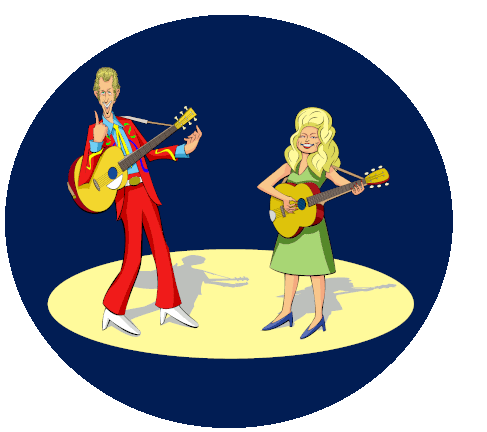
(Click on the image to zoom in.)
You'll see in some citations that The Porter Wagoner Show was the longest running country and western television show in history. It first aired in 1961 and we read that the last show was broadcast in 2016. That's a span of 55 years.
Actually, that's straining at the harness a bit - or at least stretching the definition of the durability of a television show. Porter's original program ran from 1961 to 1981. Certainly he appeared on television after that and there are these things called re-runs. But the actual entity known as The Porter Wagoner Show ended after a one-year attempted revival in 1984. But twenty-one years is still a respectable enough run, particularly since at that time if a show lasted five years it was considered a phenomenal success.
So the nod to the longest run C&W television show still seems to be Hee-Haw - which ran from 1969 to 1993 and starred Roy Clark and Buck Owens. On the other hand, Hee-Haw was really a countrified version of the "hippie" comedy show Rowan and Martin's Laugh-In and which was broadcast from 1967 to 1973.
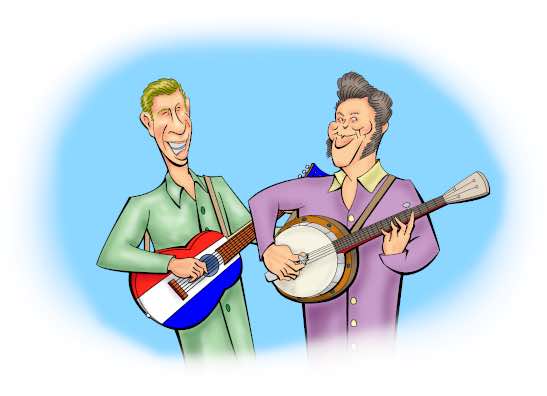
Hee-Haw
with Buck and Roy
So in some ways it's possible to think of Hee-Haw as not really a Country and Western show at all. That there was a lot of country music can't be denied, but it was really a fairly typical comedy variety show with the characters drawn from the Appalachian/Ozark "hillbilly" stereotypes. You had men in floppy bag hats, women in skimpy shorts with shirts tied up at the mid-drift, and hound dogs laying around.
Not Necessarily C&W
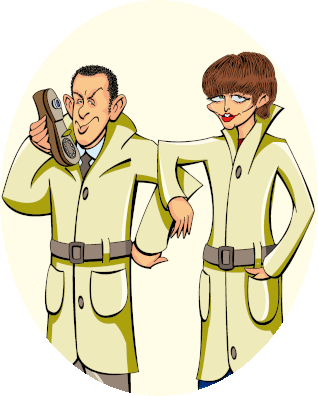
Don and Barbara
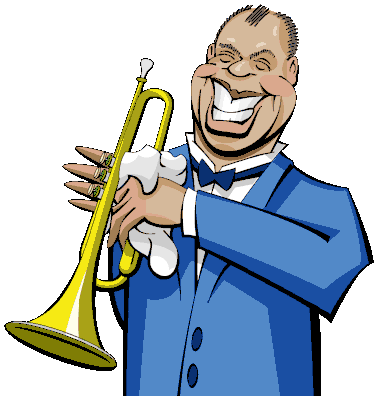
Louie
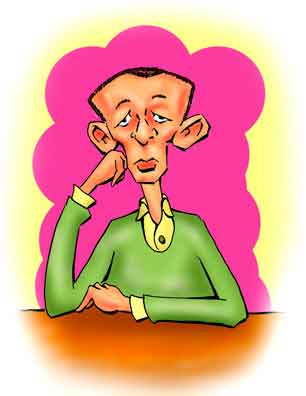
Louie
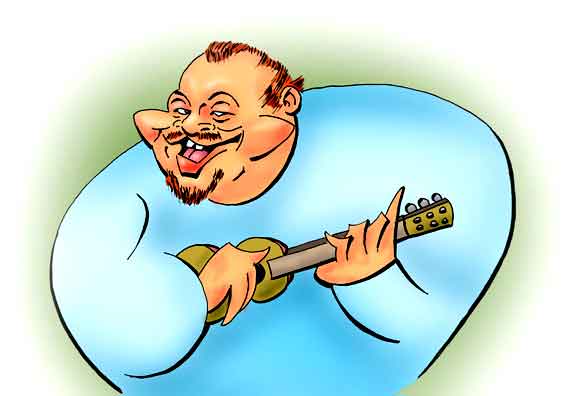
Burl
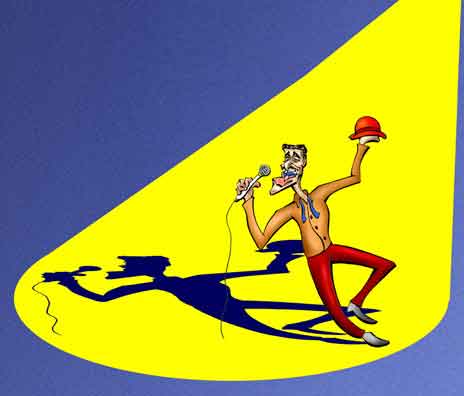
Sammy
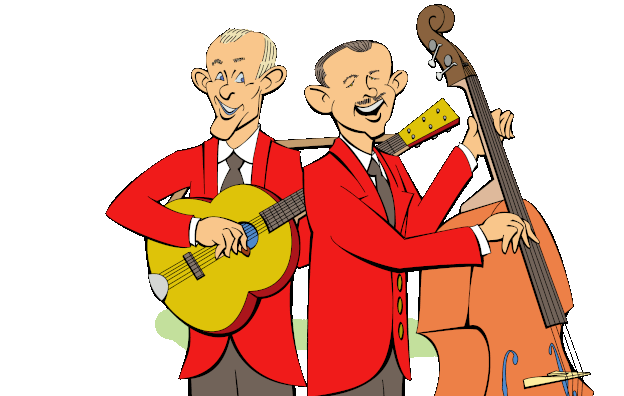
Tommy and Dick
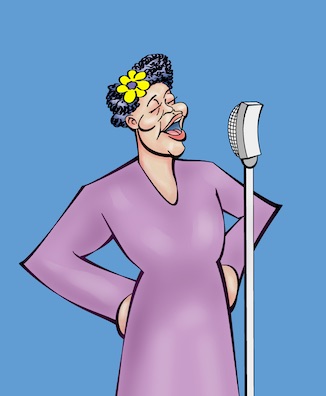
Ella
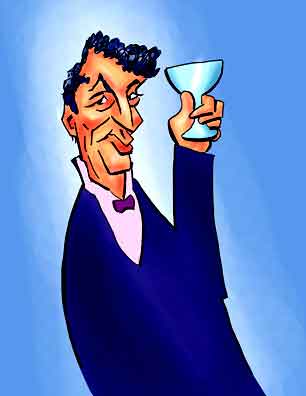
Deano
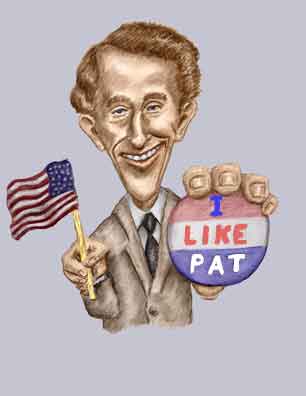
Pat

The Mick
Al
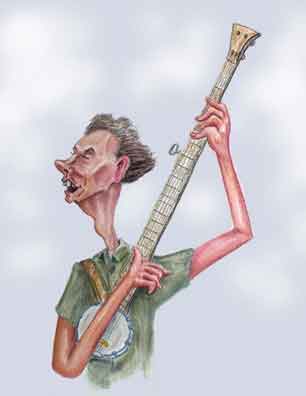
Pete
But to maintain a primetime audience Hee-Haw had to follow the lead of other - quote - "country shows" - unquote - like Glen Camplbell's Glen Campbell's Good Time Hour, Jimmy Dean's The Jimmy Dean Show, and Johnny Cash's The Johnny Cash Show and include many non-country celebrities on the guest list. So the viewers got to see - in this by no means exhaustive enumeration - Ernest Borgnine (Oscar winning star of Marty but best known as the conniving commander Quinton McHale on Mchale's Navy), Ed McMahon (Johnny Carson's sidekick and announcer), Sammy Davis Jr., George Gobel, Will Geer (Grandpa on The Waltons but originally a Shakespearean Broadway actor and friend of Woody Guthrie), John Ritter (one-third of the stars of Three's Company), Ruth Buzzi (a regular on Laugh-In), Ethyl Merman, Paul Anka, Doc Severinsen, Leslie Nielsen, B. J. Thomas, Willard Scott (the joking weatherman on the Today Show), Vic Damone, Bobby Vinton, Burl Ives, Kathie Lee Gifford and Regis Philbin, Merlin Olsen (defensive tackle for the LA Rams), Orville Redenbacher (the Popcorn King), Robert Preston ("Harold Hill" in The Music Man), Hugh Hefner, Mickey Mantle, Dan Blocker ("Hoss" on Bonanza), Al Hirt, The Monkees, Liza Minnelli, Kirk Douglas, Louis Armstrong, Pearl Bailey, Don Adams, Barbara Feldon, John Davidson, Henny Youngman, Patty Duke, The Mills Brothers, Maureen O'Hara, Jim Henson, Art Carney, Pat Paulsen, Cher, The Smothers Brothers, Norm Crosby, Flip Wilson, Tony Randall, Joey Bishop, Raymond Burr, Bob Hope, Liberace, Leslie Uggams, Stevie Wonder, Dean Martin, The Supremes, Ella Fitzgerald, Don Rickles, Little Richard, Pete Seeger, Carroll Spinney (Big Bird/Oscar the Grouch from Sesame Street), and Howdy Doody.
But The Porter Wagoner Show was pure country and western and the guests were rarely drawn from the non-C&W pool. Porter was careful to select performers who if not titan's then had the potential to become titans. So you saw the likes of Mel Tillis, Mac Wiseman, Hank Snow, Tex Ritter, Jerry Reed, Merle Travis, June Carter Cash and husband Johnny, Jimmy Dean, Conway Twitty, Loretta Lynn, Kitty Wells, George Jones, Roy Clark, Buck Owens, Merle Haggard, Johnny Paycheck, Jimmie Driftwood, and Dottie West. The show wasn't just music and you had a good mix with humor with the likes of Archie Campbell, Grandpa Jones, Stringbean Akeman, George Lindsey, and Minnie Pearl.
Like many country and western singers Porter was from a rural family. Born in the heart of the Ozarks in West Plains, Missouri in 1927, he started singing in church, and he became a fan of the Grand Ole Opry radio program. Porter used to imagine himself singing on the show, and a high point in his youth was when he actually met Opry star Roy Acuff who encouraged the aspiring performer to work hard and keep practicing.
Porter worked at various jobs but these were always secondary to his performing. And while he was working at a grocery store his employer became so impressed with the kid's singing that he paid for a 15 minute spot on the local radio station where Porter could sing.
The C&W Pool

Jerry Reed
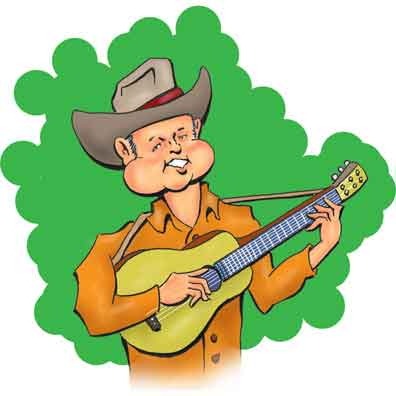
Merle Travis
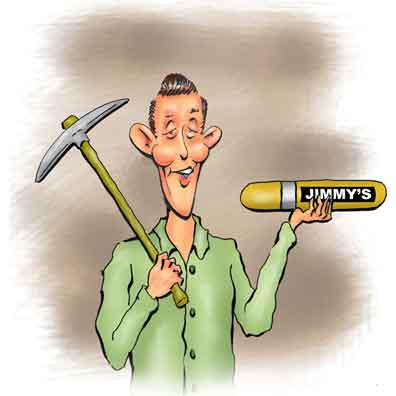
Jimmy Dean

Loretta Lynn and Conway Twitty
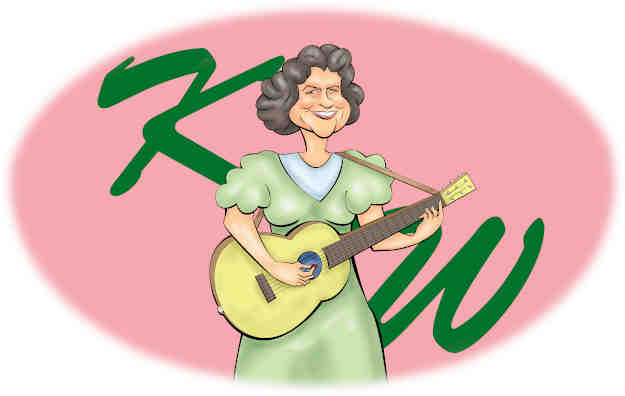
Kitty Wells

Merle Haggard
In 1951 and now with actual performing experience under his belt, Porter became a full-time musician and appeared on Springfield's Station KWTO. Springfield was then  THE center of country music and was the home of the #1 country music program on radio and television. That was the Ozark Jubilee which was hosted by Clyde Julian "Red" Foley.
THE center of country music and was the home of the #1 country music program on radio and television. That was the Ozark Jubilee which was hosted by Clyde Julian "Red" Foley.
Porter quickly came to the attention of RCA executives who in 1952 gave the young performer a contract. Although you'll read that Porter's recording career got off to a slow start, he nevertheless showed ability as a songwriter. In 1953 Carl Smith hit #2 on the Billboard Country Charts with "Trademark", a song written by Porter and Gary Walker.1 But then in 1955 Porter himself broke into the Top Ten with "Company's Comin'" (which reached #7) and the same year he hit #1 with "A Satisfied Mind". Now a top performer, Porter landed a spot on the Ozark Jubilee.
Footnote
Carl Smith is not to be confused with Cal Smith. Although Cal Smith was a country singer, he and Carl were not the one and the same. Carl - who released "Trademark" - was the first husband of June Carter and had most of his success in the 1950's. Cal, although singing in the 50's, really launched his career in the 1960's.
Being a Jubilee star seemed to be a height above which no performer could exceed. But Porter saw that the wind was blowing towards the east. So he pulled up stakes and moved to the growing city of Nashville, Tennessee, where in 1957 and only 30 years old he achieved his childhood ambition when he was invited to join the Grand Ole Opry. The Opry was broadcast weekly on radio, and was originally called the Barn Dance. But to avoid confusion with the eponymous show from WLS in Chicago, it changed the name. Because it was #2, it did try harder, and it was soon to push the Ozark Jubilee aside as the most popular country music show.
You can argue whether the Porter Wagoner Show or Hee-Haw is the longest running country music program on television. But it's the Grand Ole Opry - sometimes more traditionally spelled as the Grand Old Opry - that is the longest running country music program on electronic media. The Opry began broadcasting in 1925 quite literally at the dawn of commercial radio (the first commercial radio station had only begun broadcasting in 1920) and is still going today. The program eventually expanded to a full four hours on Saturday night and is now not just the longest running country music program, but it's the longest running radio program in history period.
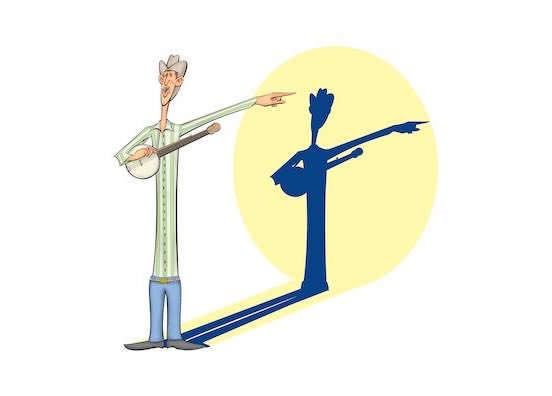
Stringbean Akeman
Close to Home
(Click on image to
zoom in and out).
The Grand Ole Opry provided steady employment at a decent salary. Some members, like Stringbean, used the Opry as their main source of income and so were able to stick close to their homes near Nashville. But with its Saturday evening time slot, other performers could tour during the week and make it back in time for the broadcast.
The Opry has remained primarily a radio program and its first attempt as a television series was not a great success. It started up in 1953 skipped a year and then continued two more seasons. But even the Ozark Jubilee folded in 1960. Television, it seems, might just be a flash in the pan.2
Footnote
It wasn't until 1985 that the Grand Ole Opry was relaunched for television and since then has continued to be produced, although not necessarily in consecutive seasons.
But Porter recognized the new metrics for a performer's success, and he appeared on television whenever he could. In 1957 The Porter Wagoner Trio was featured on the first incarnation of The Jimmy Dean Show, and it was Porter's television presence of mixing folksy talk with jokes and country singing that landed him his own show in 1961.

Bo Diddley
Places for the Ladies
Like Bo Diddley did for rock and roll, Porter always made places for the ladies. His first featured female soloist was Norma Jean who was particularly popular with the audience but left after 24 episodes to spend more time with her family (Porter did tour an awful lot). After a lengthy search, Porter selected a lady who was small in stature but large in talent. That was Dolly Parton who was only 21 years old.
Touching the ceiling at 5 feet, when Dolly first appeared in 1967 she sang "Dumb Blonde". The song, though, had a clear anti-dumb blonde message and when Dolly was introduced by Porter he said Dolly was definitely not a dumb blonde. Soon they were singing duets that proved particularly popular.
There's no need to go into Dolly and Porter's professional relationship except to say it was long, complex, lucrative, costly, rewarding, and difficult for both of them. But all's well that end's well (whoever said that), and Dolly and Porter collaborated on fourteen Top Ten hits and "Please Don’t Stop Loving Me" hit #1 in 1974. For her part Dolly has released over 20 #1 hits on Billboard's country chart and has had two #1 hits on Billboard's Hot 100.
Although it's hard to picture a national economy not being controlled by country music, in the early 60's when Porter kicked off his show, the country audiences were fairly limited and regional. The show itself was far from prime time and could be seen on Sunday afternoons at 5:00.
But Porter was fortunate to begin his show when financing a television program was relatively simple compared to today as that was also the era of:
THE
TELEVISION
PROGRAM
 SPONSOR
SPONSOR
That is, instead of having 10 minutes of commercials for diversified products for a half hour show and where each company pays for its time separately as we have today, a single company put up the cost for the whole show. Sometimes one company would sponsor the entire season over many years.
The single sponsor business model was able to work because of the relatively low costs of early television productions. It's hard to believe today when one actor can pull in over a million dollars per episode, but in 1950 a single hour-long TV program could be produced for around $15,000 - $20,000. True this wasn't exactly cheap when the average family income was around $3,000 per year. But it was cheap enough that there were only about five minutes of commercials in a half hour show.
By the 1960's production costs were going up and six digit budgets per episode were beginning to creep in. So by the end of the decade the days of the sponsors and alternate sponsors, if not completely gone, were fading fast.
Fortunately Porter found a sponsor who stuck with him through the early 70's. That was the Chattanooga Medicine Company. So in some ways Porter was following the famous tradition of the medicine show performers.
The Chattanooga Medicine Company got its start in 1879 by producing what was called the Black Draught, a medicine that was then referred to as a cathartic or purgative and is sometimes described as an aperient, eccoprotic, physic, and a name we will not use.
The Black Draught's main ingredient was senna, an herb which contains glycosides called sennosides such as (9R)-9-[(9R)-2-carboxy-4-hydroxy-10-oxo-5-[(2S,3R,4S,5S,6R)-3,4,5-trihydroxy-6-(hydroxymethyl)oxan-2-yl]oxy-9H-anthracen-9-yl]-4-hydroxy-10-oxo-5-[(2S,3R,4S,5S,6R)-3,4,5-trihydroxy-6-(hydroxymethyl)oxan-2-yl]oxy-9H-anthracene-2-carboxylic acid. With a name like that, it has to be good.
Companies that were manufacturing such products in the late 19th and early 20th century eventually switched to synthetic chemicals like phenolphthalein (yes, the same phenolphthalein used as an indicator in acid-base titrations in chemistry classes). Ironically in the 1990's health and safety concerns prompted the companies to switch back to senna. Sometimes the old fashioned remedies really are the best.
The other product in the early days of the Chattanooga Medicine Company was Wine of Cardui (pronounced card-DOO-ee). Wine of Cardui was intended to relieve what were politely termed "women's complaints". As one satisfied customer said (or at least was quoted as saying):
Wine of Cardui is indeed a blessing to tired women. I know of nothing which will take its place, and having suffered seven years with weakness and bearing down pains, and having tried several doctors and different remedies with no success, I am glad to be able to say that your Wine of Cardui was the only thing which helped me, and eventually cured me. It seemed to build up the weak parts, strengthen the system, and correct irregularities. It is certainly an excellent medicine as I know by experience."
Wine of Cardui was reportedly based on a traditional Cherokee recipe. An herbal infusion, it was probably served as a tea and was reported effective at relieving - again in polite parlance - "ladies' distress". Exactly what the original herb was has been lost to time, but the Chattanooga Medicine Company prepared the product from black haw (Viburnum prunifolium), blessed thistle (Cnicus benedictus), and goldenseal (Hydrastis canadensis).
Oh, yes. And although the label stated it was "a harmless Bitter Wine without intoxicating qualities", Wine of Cardui was fortified at 19% alcohol. Such a content wasn't unusual for Victorian medicines which routinely included ingredients that would - quote - "treat the illness symptomatically" - unquote. Given how the late 1800's and early 1900's is supposed to be a time of prudishness, the ads spoke of the - ah - "complaints" treated by Wine of Cardui with surprising specificity.
Of course, by the time the Chattanooga Medicine Company was sponsoring Porter's show, it was providing modern and well-known over-the-counter medicines and health and care products. The company is still in business albeit under an updated name and it's a good bet you've used its products at one time or another, particularly if you're not quite sure how to spell R-E-L-I-E-F.
Possibly because Porter stayed true to country music, he only had a few songs that made the pop charts, and after 1972 he never broke above the Top 20 even on C&W. But he continued to perform, and when he appeared for the last time in October 2007 at the Grand Ole Opry, he had been singing for well over 50 years.
You can't write about Porter Wagoner and not mention his Nudie suits. No, the word has no connotations with the skimpiness of the costume. Quite the contrary.
The Nudie suits are simply named after their inventor and were first designed and manufactured by Nudie Cohn. Born Nuta Kotlyarenko in Kiev in the Ukraine in 1902, Mr. Cohn worked as a tailor in New York City before relocating during the first years of World War II to Los Angeles. Then around 1950 he began creating the colorful suits adorned with rhinestones and complex stitched designs since that's what the western performers like Tex Ritter wanted.
Today the suits seem less festooned with rhinestones probably because of the need to reduce the reflected glare of the television lights. Although the Nudie suits saw a decline in popularity in the 80's and 90's, they have had something of a post-Millennium resurgence.
Porter started wearing the Nudie suits after Mr. Cohn caught one of his shows and suggested a more colorful costume could add more pizazz to his performances. Since Porter was making about $50 a week and the suit cost over $300, Mr. Cohn offered the suit free of charge and was betting that Porter's rising fame would be good publicity. It was a shrewd investment, and Mr. Cohn's customers have included Hank Williams, George Jones, Johnny Cash, Tanya Tucker, Hank Snow, Glen Campbell, Buck Owens (and his Buckaroos), Ernest Tubb, Tex Ritter, Ray Price, Jimmy Dean, Roy Rogers, Dale Evans, Gene Autry, Mike Nesmith, Sonny and Cher, Elton John, Keith Richards, Robert Redford, a chap named Elvis, and - yes - Dolly Parton.
References and Further Reading
A Satisfied Mind: The Country Music Life of Porter Wagoner, Steve Eng, Rutledge Hill Press, 1992.
The Official Dolly Parton Scrapbook, Connie Berman, Grosset & Dunlap, 1978.
"100 Greatest Country Artists of All Time", David Browne, Jon Dolan, Jon Freeman, Chris Parton, Stephen L. Betts, Andrew Leahey, Joseph Hudak, Kory Grow, Marissa R. Moss, Maura Johnston, Joe Levy, Will Hermes, David Cantwell, Jonathan Bernstein, Alan Light, Rolling Stone, June 27, 2008.
"Porter Wagoner - The Thin Man", The Journal of Roots Music - No Depression.
"Porter Wagoner", Country Music Hall of Fame.
"The Porter Wagoner Show", Ryan Darrow, Tennessee Encyclopedia.
"Porter Wagoner", [Washington, D. C.] Evening Star, June 30, 1957, Page 179, Chronicling America, Library of Congress.
"WBTV - Channel 13 - Florence, S. C.", Tabor City [South Caroline] Tribune, November 20, 1963, Page 7, Chronicling America, Library of Congress.
"Porter Wagoner Concert History", Concert Archives.
"Dolly Parton", Billboard.
Dear Papa, Dear Hotch: The Correspondence of The Correspondence of Ernest Hemingway and A. E. Hotchner, Albert DeFazio, III (Editor), University of Missouri, 2005.
"8 of the Most Expensive TV Shows Made in the 1960s and '70s", Decades, February 19, 2020.
"Chattanooga Medicine Company", Ned Irwin, Tennessee Encyclopedia.
"Black Draught and Wine of Cardui", Dave Tabler, Appalachian History.
"Porter Wagoner", Internet Movie Data Base.
"Dolly Parton", Internet Movie Data Base.
"TV networks Load Up On Commercials", Joe Flint, Los Angeles Times, May 12, 2014.
"McElree's Wine of Cardui", American Museum of Natural History, Smithsonian Institution.
"Wine of Cardui", The Quack Doctor, October 23, 2009.
"What Leading Druggists Say About CARDUI, The Woman's Tonic", The Chattanooga [Tennessee] News, August 31. 1918, p. 39, Chronicling America,Library of Congress.
"What Mrs. Laura Adams of Galveston, Tex., Praise Wine of Cardui", Pine Bluff [Arkansas] Daily Graphic, May 13, 1902, p. 2, Chronicling America, Library of Congress.
"Rhinestone Cowboys: The Embroidered Suits Once Rocked By Johnny Cash and Gram Parsons Are Making a High-Fashion Comeback", Shannon Adducci, Billboard, April 22, 2016.
"Stars Who Rocked The Nudie Suit", Billboard, April 22, 2016.
"Nudie Suits: Flashy Rodeo Fashion Of Rock And Country Stars", Kellar Ellsworth, Groovy History.
"Nudie Suits Sewed Up Country Music's Glitzy Years", Steve Freeman, County Line Magazine, February 22, 2018.
"Nudie Suits and Boots", Country Music Hall of Fame.
"McElree's Cardui, Chattanooga Medicine Company", Antique Bottle Stories.
"Longest Running Weekly Radio Programme - Music", Guiness World Records.
"The Grand Ole Opry is Finally Returning to Television", Saving Country Music, October 22, 2019.
"The Grand Ole Opry 1953-", Internet Movie Data Base.
"The Grand Ole Opry 1985-", Internet Movie Data Base.